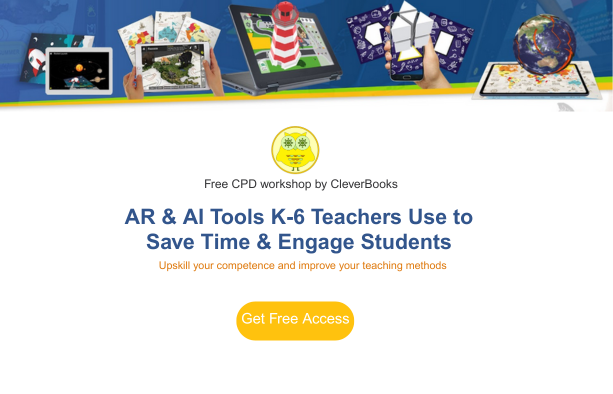As a primary science teacher, I’m always looking for ways to spark curiosity and make abstract scientific ideas feel real and exciting for my students. Concepts like the solar system or the layers of the Earth can often feel distant or too complex for young learners to grasp through textbooks alone.
That’s where augmented reality (AR) has transformed my classroom. By integrating AR tools into science lessons, I’ve seen my students light up with wonder as they explore the natural world in ways that were never before possible.
Why Augmented Reality Works in Primary Science
Children are natural scientists – constantly questioning, exploring, and testing their ideas about the world. AR taps into this innate curiosity by allowing students to:
- See the invisible – peel back the Earth’s surface in AR to explore the crust, mantle, outer core, and inner core. Students can rotate and zoom into each layer, making a complex concept like Earth’s structure visible and interactive
- Travel without leaving the classroom -walk through a rainforest, dive under the sea, or orbit planets in the solar system.
- Connect learning to the real world -link abstract concepts (like gravity or the layers of the Earth) to vivid, interactive 3D models.
With AR, science becomes less about memorizing facts and more about hands-on discovery.
Practical Ideas for Using AR in Primary Science
1. Solar System Walk
Bring the planets into the classroom through AR models.
- Let students “walk” around Earth or compare the size of Jupiter to Mars.
- Encourage them to notice patterns: Which planets have rings? Which are closest to the sun?
– A dynamic way to teach space science and scale.
- Layers of the Earth in AR
Project a 3D model of Earth into the classroom and let students zoom in to explore its layers — crust, mantle, outer core, and inner core.
Ask prompts like:
- Which layer do we live on?
- What is the hottest part of the Earth?
Students can rotate, zoom, and interact with the model, making geology concepts much easier to understand.
– A hands-on way to bring abstract earth science to life.
- AR Rocket Assembly Challenge
Students work in teams to assemble the parts of a virtual rocket in AR. They must place each piece correctly — otherwise, the rocket won’t launch.
- Discuss why each part is important (e.g., boosters, fuel tank, command module).
- Once the rocket is assembled correctly, watch it take off!
- A perfect blend of engineering, problem-solving, and teamwork that makes space science exciting.
Teacher Tips for Using AR in Science Lessons
- Keep it short and focused. Younger learners engage best with 5–10 minute AR activities.
- Blend AR with hands-on experiments. For example, after exploring water molecules in AR, try a real evaporation experiment.
- Encourage questioning. Use prompts like What surprised you? What do you still wonder?
- Capture curiosity. Let students take photos of their AR explorations to include in science journals or portfolios.

Final Thoughts
Science is all about curiosity, exploration, and discovery. Augmented reality doesn’t replace experiments or nature walks—it enriches them. With CleverBooks’ Augmented Classroom, my students have gained a deeper understanding of science concepts, from the tiniest cell to the vastness of space. Most importantly, they’ve developed a sense of wonder about the world around them.
If you’re looking for a way to make science lessons more interactive and meaningful, AR is a powerful tool to bring the subject alive—right in your classroom.
